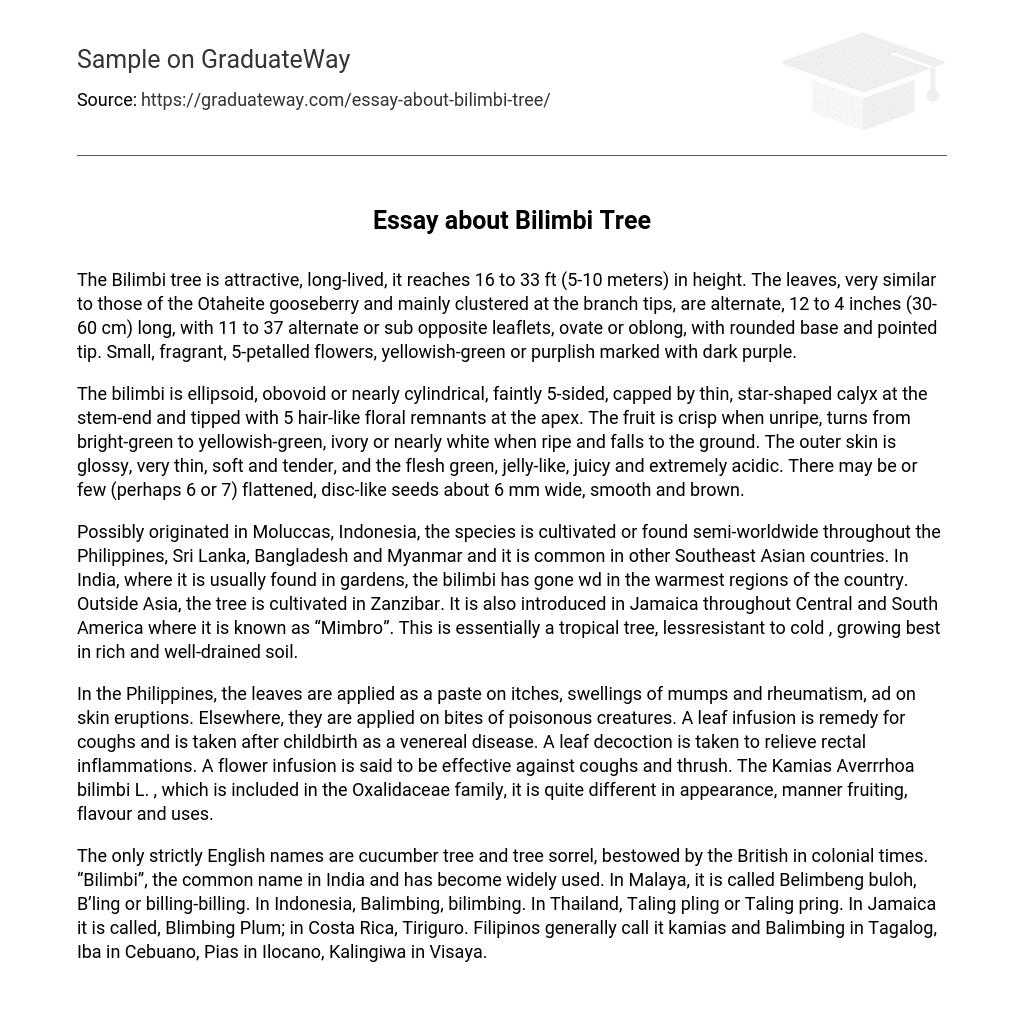The Bilimbi tree is attractive, long-lived, it reaches 16 to 33 ft (5-10 meters) in height. The leaves, very similar to those of the Otaheite gooseberry and mainly clustered at the branch tips, are alternate, 12 to 4 inches (30-60 cm) long, with 11 to 37 alternate or sub opposite leaflets, ovate or oblong, with rounded base and pointed tip. Small, fragrant, 5-petalled flowers, yellowish-green or purplish marked with dark purple.
The bilimbi is ellipsoid, obovoid or nearly cylindrical, faintly 5-sided, capped by thin, star-shaped calyx at the stem-end and tipped with 5 hair-like floral remnants at the apex. The fruit is crisp when unripe, turns from bright-green to yellowish-green, ivory or nearly white when ripe and falls to the ground. The outer skin is glossy, very thin, soft and tender, and the flesh green, jelly-like, juicy and extremely acidic. There may be or few (perhaps 6 or 7) flattened, disc-like seeds about 6 mm wide, smooth and brown.
Possibly originated in Moluccas, Indonesia, the species is cultivated or found semi-worldwide throughout the Philippines, Sri Lanka, Bangladesh and Myanmar and it is common in other Southeast Asian countries. In India, where it is usually found in gardens, the bilimbi has gone wd in the warmest regions of the country. Outside Asia, the tree is cultivated in Zanzibar. It is also introduced in Jamaica throughout Central and South America where it is known as “Mimbro”. This is essentially a tropical tree, lessresistant to cold , growing best in rich and well-drained soil.
In the Philippines, the leaves are applied as a paste on itches, swellings of mumps and rheumatism, ad on skin eruptions. Elsewhere, they are applied on bites of poisonous creatures. A leaf infusion is remedy for coughs and is taken after childbirth as a venereal disease. A leaf decoction is taken to relieve rectal inflammations. A flower infusion is said to be effective against coughs and thrush. The Kamias Averrrhoa bilimbi L. , which is included in the Oxalidaceae family, it is quite different in appearance, manner fruiting, flavour and uses.
The only strictly English names are cucumber tree and tree sorrel, bestowed by the British in colonial times. “Bilimbi”, the common name in India and has become widely used. In Malaya, it is called Belimbeng buloh, B’ling or billing-billing. In Indonesia, Balimbing, bilimbing. In Thailand, Taling pling or Taling pring. In Jamaica it is called, Blimbing Plum; in Costa Rica, Tiriguro. Filipinos generally call it kamias and Balimbing in Tagalog, Iba in Cebuano, Pias in Ilocano, Kalingiwa in Visaya.





